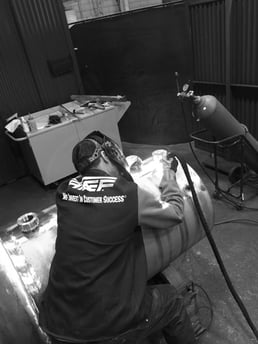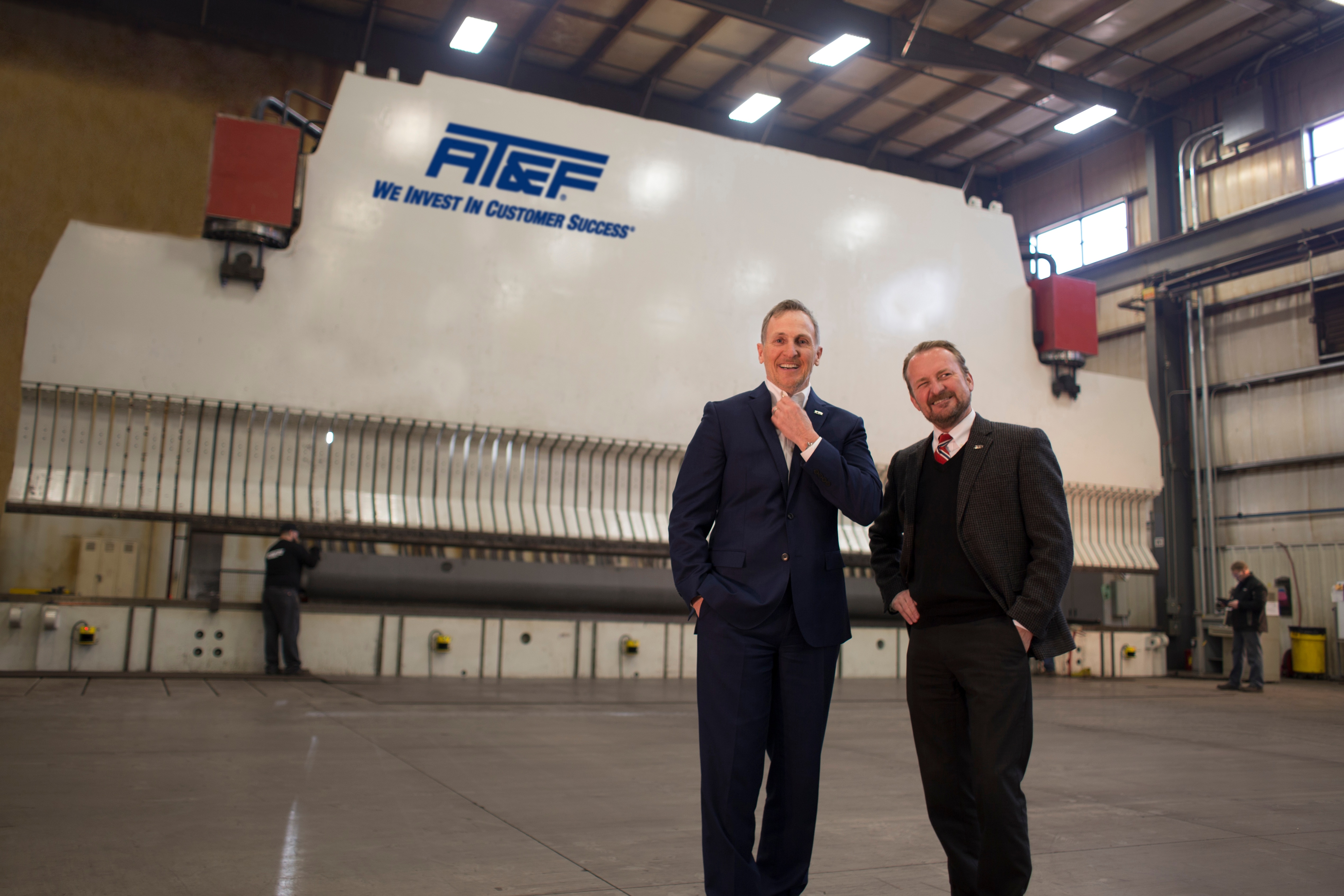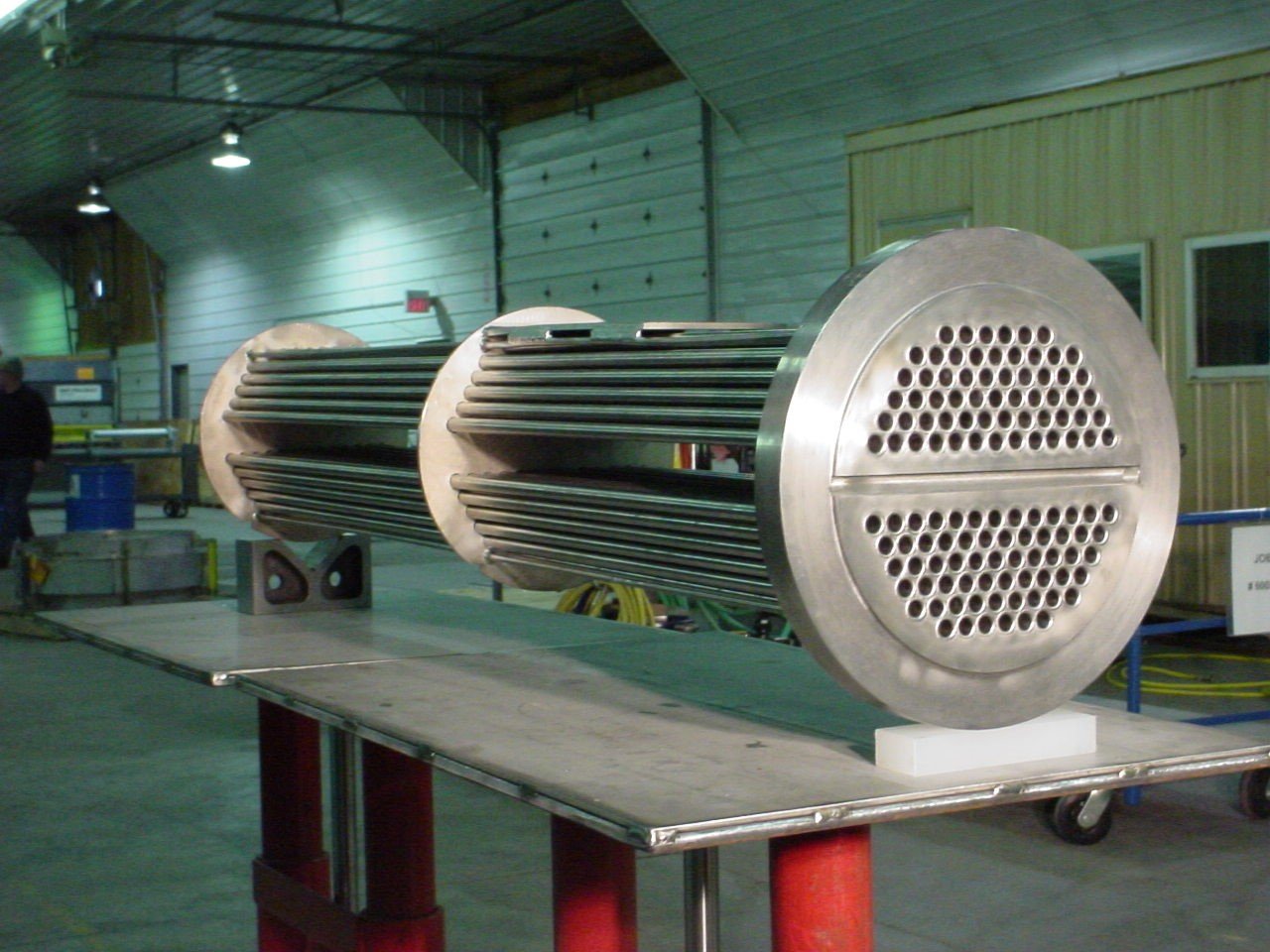When a welding job requires precision, the obvious method to use is TIG welding. Gas tungsten arc welding (GTAW) is a welding method using tungsten as an electrode and argon or helium gas as a shielding agent. When GTAW was first introduced in 1941, it used exclusively helium as the shielding gas. This gave it its original name: Heli arc welding. It is now referred to as tungsten inert gas welding, or TIG for short. It is a slow and difficult method to master, but a trained welder can use TIG welding to produce very high quality welds. But what makes TIG welding so precision oriented? And why do TIG welders have to feed the wire by hand?
What makes TIG welding different than MIG or stick welding is the electrode used. In MIG and stick welding, the electrode is a consumable, allowing for seamless transfer of filler metal into the weld pool. TIG welding, however, uses a tungsten electrode with an extremely high melting point and excellent conductivity. The arc produced does not generate enough heat to melt the tungsten  electrode, so any filler metal must be introduced to the weld pool by hand. This requires a steady hand and a focus on control. The precision necessary to perform a quality weld using this method make it very tedious, but most applications are much smaller scale than traditional MIG or stick welding. TIG welding is often used on specialty metals due to the amount of control that a welder would have on an expensive and often demanding workpiece.
electrode, so any filler metal must be introduced to the weld pool by hand. This requires a steady hand and a focus on control. The precision necessary to perform a quality weld using this method make it very tedious, but most applications are much smaller scale than traditional MIG or stick welding. TIG welding is often used on specialty metals due to the amount of control that a welder would have on an expensive and often demanding workpiece.
As with all welding processes TIG welding has its limitations. The Welding Engineer must consider joint designs, material thickness, and the workpiece material to determine what welding process should be used. GTAW welding is one of the most expensive welding processes due to the cost of the equipment, consumables, and the gas cost (pure Argon or helium cost is considerably higher than straight CO2 or mix gases). The process is very slow and does not lend itself to heavy plate thickness as the weld deposit is very small compared to other welding processes. One benefit of TIG Welding is the ability to perform sound open root weld joints welded from one side using a backing gas, especially on joints that the backside is unreachable.
Argon gas is the most common shielding agent, although it is sometimes used along with helium for special applications. Unlike MIG welding, CO2 cannot be used for shielding because it reacts with the tungsten arc and destroys the electrode. Striking an arc can be done in two ways. One method requires the use of a foot pedal to increase amperage and produce a high-frequency spark of electricity with enough energy to jump the gap from electrode to the workpiece. One can also perform a “scratch/lift start” by making contact with the workpiece briefly to establish the arc, then pulling the electrode away to a stable distance. After an arc is established, the welder drops the amperage and the arc is sustained, creating a weld pool in the process. The amperage can be adjusted with the foot pedal, adding another level of control to the process.
A welder must be keen to the electrode as improper handling or preparing can ruin the tungsten rod. There are different types of electrode that affect the quality of the arc and the electrode’s compatibility with the power source. Pure tungsten rods are well-suited for AC power supplies, but are often passed over in favor of tungsten rods with different “rare-earth” elements blended into the rod. Cerium, thorium, lanthanum, and zirconium metals are often added to tungsten to enhance specific characteristics like contamination resistance, rod corrosion resistance, ease of arc starting, and arc stability. How the rod is prepared affects the arc as well. TIG welders grind the tungsten rods to produce various tip styles to match their needs. The point on the electrode can vary from rounded to a flat-tip point depending on the type of power supply used, the material of the workpiece, and the current of the arc. A needle-sharp point is generally only used in low current and thin material applications, but a high current runs the risk of blowing off the pointed tip and contaminating the weld pool. High current applications fare better with a truncated or rounded tip for maximum stability. When grinding the tungsten electrode, it is particularly important to make sure that the grind serrations run in line down to the tip point. This channels the electricity to follow these serrations to the point without swirling, producing a precise, fine, and highly controlled arc. This is how precision and size of weld beads are controlled.
TIG welding is a precision driven process that leaves every variable under the control of the welder. This control allows for levels of precision and quality surpassing all other forms of welding. An expert TIG welder can confidently perform the most intricate and painstaking welds without breaking a sweat. With a steady hand and a keen eye for detail, a capable TIG welder is as essential to a steel fabricating facility as the steel being formed. AT&F has world-class TIG welding capabilities and an in-house Weld Institute to ensure the highest quality products for your toughest projects. Contact us with any questions on your next job.


 Fabricating Lessons that Stand the Test of Time
Fabricating Lessons that Stand the Test of Time